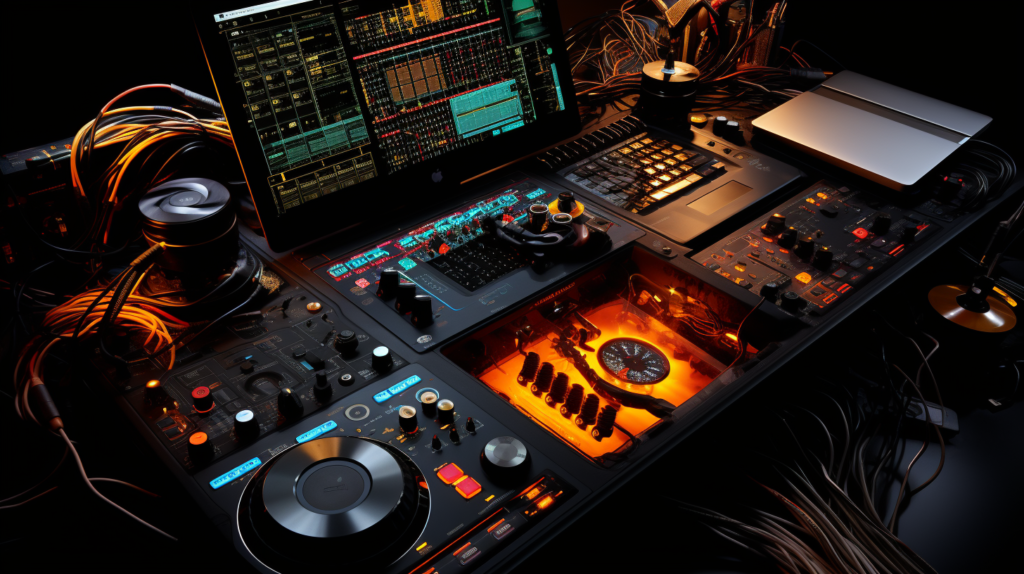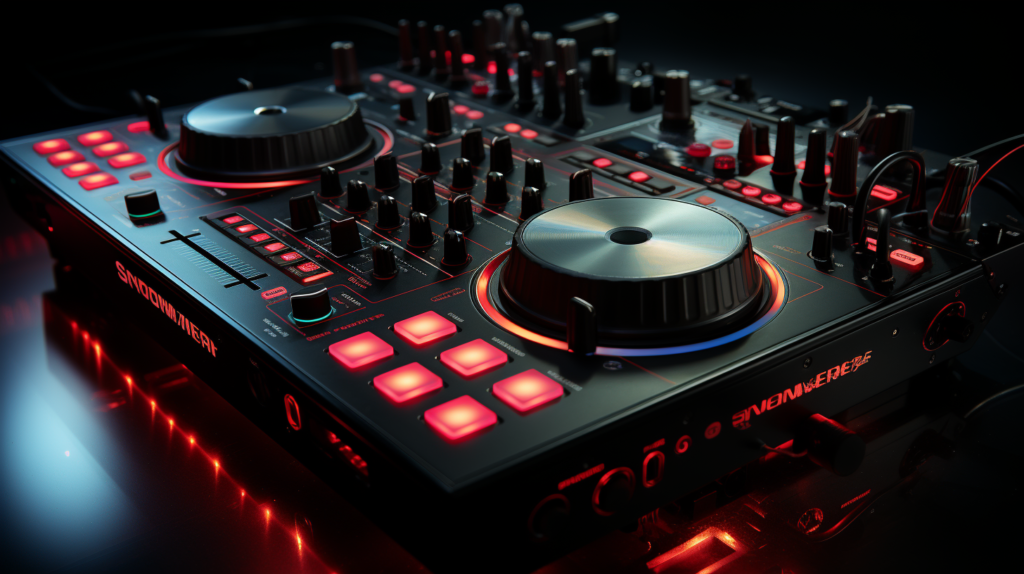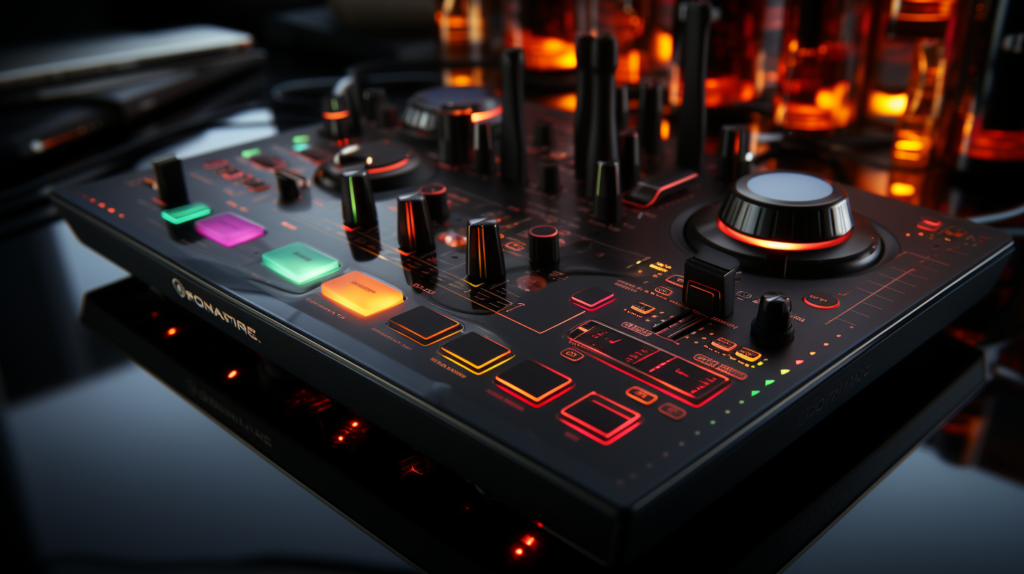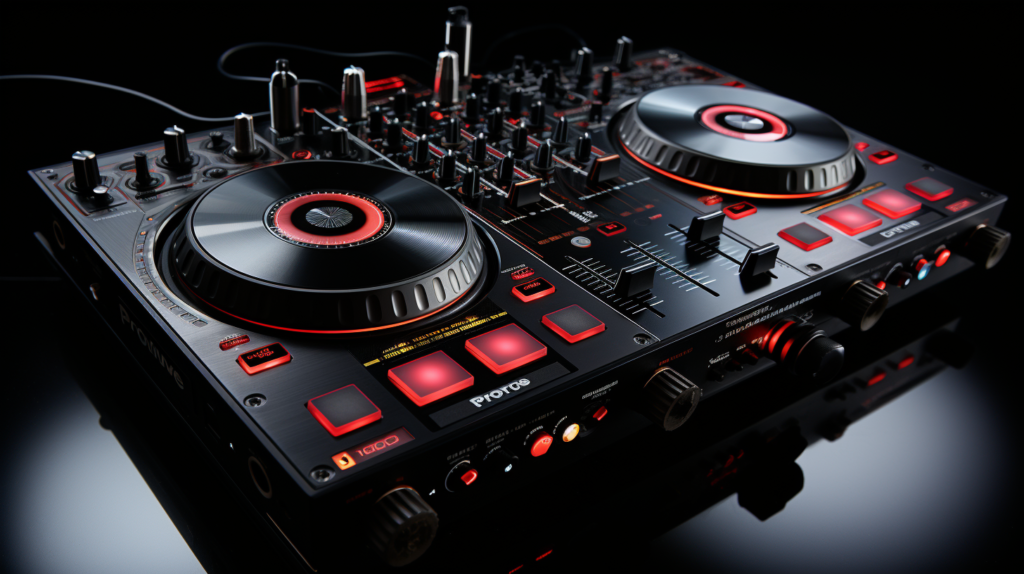Despite having DJing software as capable as Virtual DJ, far too many bedroom DJs fail to utilize the immense benefits that comes with integrating external hardware controllers.
But with the right MIDI-capable controller properly connected and mapped, Virtual DJ can transform into a dynamic live performance toolkit – rather than just a music player.
In this beginner’s guide, let’s cut through the complexity to provide easy-to-implement steps for how to connect controllers to Virtual DJ on both Windows and Mac. From initial setup to unlocking advanced features, we will cover everything you need to know bridge the hardware-software divide.
How to Connect Controller to Virtual DJ

Connecting a physical DJ controller to Virtual DJ software enables precise control over DJ performances that elevates you above a basic media player.
The key is choosing a controller that has MIDI capabilities, which enables communication between the hardware controls and software parameters. From here, we install drivers and configure mappings to sync functions between controller buttons/knobs and the Virtual DJ interface. Seamless integration then allows mixing, effects, loops, cue points and more to be manipulated from the external controller rather than solely relying on the computer. Bridging this hardware-software divide is essential for taking amateur bedroom DJs and transforming into professional-grade performers.
Now that we have covered the basics, let’s start from the beginning by looking at how to choose an optimal controller for using with Virtual DJ.
Choose Your Controller

There are many DJ controllers on the market that are compatible with Virtual DJ software. When selecting a controller to use with Virtual DJ, you’ll want to consider the size, features, and compatibility. Popular DJ controller manufacturers that work seamlessly with Virtual DJ include Pioneer, Numark, Denon, Hercules, Native Instruments, and more. Make sure to choose a controller that is MIDI-capable, as this allows the controller to communicate with DJ software via MIDI signal to control functions like play, pause, tempo, effects, and more. Choosing the right controller for your needs and skill level is an important first step before connecting to Virtual DJ.
Install Drivers and Configure Controller

After selecting a compatible DJ controller, the next step is to install the latest drivers and configure the controller to work with your computer. Most controller manufacturers provide drivers to download on their websites which allow the controller to interface properly with computers and DJ software. First, download and install the drivers for your specific controller model. Then, connect your controller to your computer using a USB cable. In some cases, you may need to connect the controller to a power source as well if it does not power on via USB alone.
Once connected, open the Virtual DJ software on your computer. Go to Options > Controllers in Virtual DJ. Here you will see a list of compatible controllers. Find your controller make and model and select it. Virtual DJ will automatically detect that the controller is connected. The next step is to configure your controller by mapping the various controls to functions within Virtual DJ. For example, you’ll want to map the play/pause, cue, and jog wheel controls to the respective decks in Virtual DJ. Knobs, sliders, and buttons can also be mapped to adjust EQs, effects, loops, samplers, and more. Take the time to fully map all your controller’s functions to customize the integration with Virtual DJ.
Connect Controller to Software

After mapping your controller in the Controller Settings window in Virtual DJ, the next step is to connect the controller to act as your external mixer within the software. Go to Options > External Mixer in Virtual DJ. A list of controllers and mixers will appear – select your controller to act as the primary mixer. Enabling your controller as the External Mixer allows functions like the crossfader, channel faders, volume knobs, and more to control the mix in Virtual DJ rather than relying on the software’s internal mixer.
You may also want to toggle on settings like Allow Deck Jogwheels, which allows you to use the physical jogwheels on your controller to adjust scratching, pitch bending, and for cueing tracks. Enable Allow Deck Loops/Samples to control loop lengths, activate samples, and more from the hardware controller. Effects can be enabled for control with the FX Enable button, and Auto Beat-Matching will automatically sync and beatmatch tracks when transitioning between them. Spend some time playing with these advanced settings to customize how your controller will operate alongside Virtual DJ to fit your mixing preferences.
Troubleshooting Issues

However, you may run into some issues getting your controller to interface properly with Virtual DJ. Here are some common troubleshooting solutions to problems that may arise:
No power or unresponsive controller – First, check that the USB connection between your controller and computer is securely connected. Try connecting to a different USB port or using a different high-quality USB cable. For controllers requiring external power, ensure they are powered on and that the power source did not become disconnected. You may need to power cycle the controller by turning it off and on again. Reinstalling the latest drivers can also help resolve connectivity issues.
Functions not working or responding incorrectly – If certain buttons, sliders, knobs, or jogwheels are not responding correctly or not working at all, you will likely need to redo the controller mapping step outlined previously. Go back into Options > Controllers and remap the specific functions giving you issues. Save the mappings and test if the problem is resolved.
Audio problems like poor sound quality or output errors – Check that your controller is selected as the External Mixer in Virtual DJ under Options. Double check your audio connections from your controller into your speakers/sound system. Issues may arise from incorrect audio cables or loose connections. You can also troubleshoot within your computer’s audio settings to make sure appropriate sample rates and buffer sizes are configured.
Thoroughly going through troubleshooting measures like those outlined above will typically resolve most connection and functionality issues between controllers and Virtual DJ. Always confirm you have the latest software and firmware updates as newer versions often fix bugs and improve performance.
Using Advanced Features

As you become more comfortable using Virtual DJ with your controller, you can start taking advantage of more advanced features to level up your DJ abilities. For example, many controllers allow you to connect multiple decks via USB or MIDI cables to expand your mixing capabilities. With Virtual DJ supporting up to 99 decks, you can connect 4, 6 or even 8+ decks between multiple controllers. Assign and map each deck within Virtual DJ to line up with the physical decks. This allows endless creative mixing potential and workflows.
You may also want to set up audio recording directly in Virtual DJ to record your DJ mixes and save them to your computer. Recording mixes allows you to review your track selections and transitions to improve as an artist. It also gives you a product to share with your fans online or to demo to venues and events. The recording feature is easily accessible in Virtual DJ with just the click of a button.
If interested in livestreaming your DJ sets online, Virtual DJ Pro also includes streaming integration. This allows you to broadcast your mix over platforms like Twitch or YouTube Live directly from the software while using your controller. Useful for promoting yourself as a DJ to gain more fans and notoriety. Streaming over social media is a great way to stand out from bedroom DJs relying solely on pre-recorded mixes.
For seasoned DJs comfortable with advanced functions like MIDI control, explore customizing MIDI assignments within Virtual DJ. By using MIDI cables or built-in MIDI inputs/outputs on your controller, you can manually program additional parameters to manipulate and control. This offers practically limitless room for customization between your controller and software. Tap encoders, faders, buttons, sensors, and more to become an advanced power DJ with more control than you ever thought possible.
Conclusion
Connecting your DJ controller with Virtual DJ opens up a professional-grade software and hardware workflow that can take your performances to exciting new levels. After selecting a controller, installing proper drivers and configuring controller mappings, you will be mixing music in Virtual DJ in no time. Troubleshooting any issues that arise as well as taking advantage of advanced features like multi-deck mixing, recording, streaming, and MIDI manipulation will keep your DJ journey always progressing forward. With some guided dedication, the musical possibilities are endless when you connect controller to computer with Virtual DJ.
